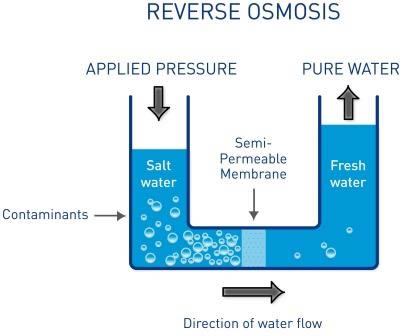Green and Self-Powered Desalination Plant in Lakshadweep | 17 Mar 2023
For Prelims: National Institute of Ocean Technology, Ocean Thermal Energy Conversion Plant, Deep Sea Mining, Deep Ocean Mission,
For Mains: Significance of harnessing Ocean Thermal Energy, Deep Ocean Mission (DOM), Government Policies & Interventions, Scientific Innovations.
Why in News?
Recently, the National Institute of Ocean Technology (NIOT), an autonomous institute under the Union Ministry of Earth Sciences (MoES) is establishing a Green and Self-powered Desalination Plant in Lakshadweep.
- The NIOT is working on an initiative to provide potable water in six islands of Lakshadweep using Low Temperature Thermal Desalination (LTTD) technology. The NIOT is now trying to make this process emission-free.
- Currently, the desalination plants, each of which provides at least 100,000 litres of potable water every day, are powered by diesel generator sets.
What is the Green and Self-powered Desalination Plant?
- About:
- The proposed desalination plant will use a combination of renewable energy sources like solar, wind, and wave energy to power the plant. The plant will be equipped with reverse osmosis (RO) technology to desalinate seawater and produce potable water. The NIOT plans to set up the plant in one of the islands, where there is a high potential for renewable energy generation.
- The plant is the first of its kind in the world as it will generate drinking water from sea water using indigenous technology, green energy and environmentally friendly processes and it is self-powered.
- Need:
- The process of LTTD is not fossil-fuel free and also consumes diesel and works by diesel generator sets, a precious commodity in the islands that has to be shipped from the mainland critical for powering the electric grid.
What is Low Temperature Thermal Desalination Technology?
- LTTD is a desalination technique that turns seawater into drinkable water.
- This method is based on the idea that ocean water 1,000 to 2,000 feet below the surface is 4–8°C colder than surface water. Therefore, a tank is used to collect and apply high pressure to salty surface water (via an external power source).
- The vaporized water under pressure is contained in tubes or a chamber. Cold ocean water is drawn up via these tubes, where the vapour condenses to create fresh water and the salt that results is diverted away and the condensed fresh water can be used for drinking.
What is Desalination Plant?
- A desalination plant turns salt water into water that is fit to drink.
- Desalination is the process of removing salts from water to produce water that meets the quality (salinity) requirements of different human uses.
- Most commonly used technology for the process is reverse osmosis.
- An external pressure is applied to push solvents from an area of high-solute concentration to an area of low-solute concentration through a semi-permeable membrane.
- The microscopic pores in the membranes allow water molecules through but leave salt and most other impurities behind, releasing clean water from the other side.
- These plants are mostly set up in areas that have access to sea water.
Conclusion
- The successful implementation of NIOT's self-powered desalination plant in Lakshadweep will require a concerted effort from all stakeholders involved and the project can become a sustainable solution to the water scarcity problem in the region and a model for other coastal communities facing similar challenges.
UPSC Civil Services Examination Previous Year Question (PYQ)
Q. Where was the first desalination plant in India to produce one lakh litres freshwater per day based on low temperature thermal desalination principle commissioned? (2008)
(a) Kavaratti
(b) Port Blair
(c) Mangalore
(d) Valsad
Ans: (a)
Exp:
- The National Institute of Ocean Technology (NIOT), Chennai has developed the world’s first Low Temperature Thermal Desalination (LTTD) plant in Kavaratti, the capital of Lakshadweep to cater to the requirements of the local population of Karavatti, Minicoy and Agatti.
- The reverse osmosis, a membrane process which is globally accepted technology suitable for desalination of saline water, is quite different from LTTD technology.
- The LTTD is a process under which the warm surface sea water is flash evaporated at low pressure and the vapour is condensed with cold deep-sea water.
- The LTTD technology does not require any chemical pre and post-treatment of seawater and thus the pollution problems are minimal and the process is suitable for island territories. Since no effluent treatment is required, it gives less operational maintenance problems compared to other desalination processes. Therefore, option (a) is the correct answer.

